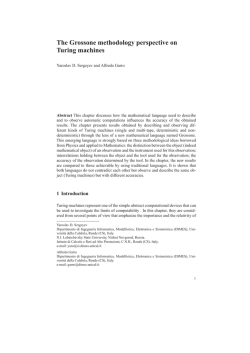
a classification of two-dimensional cellular
A CLASSIFICATION OF TWO-DIMENSIONAL CELLULAR AUTOMATA USING INFINITE COMPUTATIONS Louis D’Alotto Department of Mathematics and Computer Science York College/City University of New York Jamaica, New York 11451 and The Doctoral Program in Computer Science CUNY Graduate Center E-mail: [email protected] Abstract This paper proposes an application of the Infinite Unit Axiom and grossone, introduced by Yaroslav Sergeyev (see [17] - [21]), to the development and classification of two-dimensional cellular automata. This application establishes, by the application of grossone, a new and more precise nonarchimedean metric on the space of definition for two-dimensional cellular automata, whereby the accuracy of computations is increased. Using this new metric, open disks are defined and the number of points in each disk computed. The forward dynamics of a cellular automaton map are also studied by defined sets. It is also shown that using the Infinite Unit Axiom of Sergeyev, the number of configurations that follow a given configuration, under the forward iterations of the cellular automaton map, can now be computed and hence a classification scheme developed based on this computation. 1. Introduction Cellular automata, originally developed by von Neuman and Ulam in the 1940’s to model biological systems, are discrete dynamical systems Key words and phrases: Cellular automata, Infinite Unit Axiom, grossone, nonarchimedean metric, dynamical systems. 2 Louis D’Alotto that are known for their strong modeling and self-organizational properties (for examples of some modeling properties see [2], [3], [6], [24], [25], [26], and [28]). Cellular automata are defined on an infinite lattice and can be defined for all dimensions. In the one-dimensional case the integer lattice Z is used. In the two-dimensional case, Z × Z. An example of a two-dimensional cellular automaton is John Conway’s ever popular “Game of Life”∗. Probably the most interesting aspect about cellular automata is that which seems to conflict our physical systems. While physical systems tend to maximal entropy, even starting with complete disorder, forward evolution of cellular automata can generate highly organized structure. As with all dynamical systems, it is important and interesting to understand their long term behavior under forward time evolution and achieve an understanding or hopefully a classification of the system. The concept of classifying cellular automata was initiated by Stephen Wolfram in the early 1980’s, see [27] and [28]. Wolfram classified onedimensional cellular automata through numerous computer simulations. He actually noticed that if an initial configuration (sequence) was chosen at random then the probability is high that the cellular automaton rule will fall within one of four classes. Later R. Gilman produced his measure theoretic/probabilistic classification of one-dimensional cellular automata and partitioned them into three classes. This was a more rigorous classification of cellular automata and based on the probability of choosing a configuration that will stay arbitrarily close to a given initial configuration under forward iteration of the map. To accomplish this Gilman used a metric that considers the central window where two configurations agree and continue to agree upon forward iterations. However, this paper is concerned with the classification of two-dimensional cellular automata. Gilman and Wolfram’s results have not been formally extended to the two-dimensional case, however, presented herein, is a new approach to a classification of two-dimensional cellular automata. 2. The Infinite Unit Axiom The new methodology of computation, initiated by Sergeyev (see [17] - [20]), provides a new way of computing with infinities and infinitesimals. Indeed, Sergeyev uses concepts and observations from physics (and other sciences) to set the basis for this new methodology. This basis is philosophically founded on three postulates: ∗ For a complete description (including some of the more interesting structures that emerge) of “The Game of Life” see [1] Chapter 25. A CLASSIFICATION OF TWO-DIMENSIONAL CELLULAR ... 3 Postulate 1. “We postulate the existence of infinite and infinitesimal objects but accept that human beings and machines are able to execute only a finite number of operations.” Postulate 2. “We shall not tell what are the mathematical objects we deal with. Instead, we shall construct more powerful tools that will allow us to improve our capacities to observe and to describe properties of mathematical objects.” Postulate 3. “We adopt the principle: ‘The part is less than the whole’, and apply it to all numbers, be they finite, infinite, or infinitesimal, and to all sets and processes, finite or infinite.”† These postulates set the basis for a new way of looking at and measuring mathematical objects. The postulates are actually important philosophical realizations that we live in a finite world (i.e. that we, and machines, are incapable of infinite or infinitesimal computations). All the postulates are important in the application presented herein, however Postulate 1 has a ready illustration. In this paper we will deal with counting and hence representing infinite quantities and measuring (by way of a metric) extremely small or infinitesimal quantities. Postulate 2 also has a ready consequence herein. In the classification presented in this paper, more powerful numeral representations will be constructed that actually improve our capacity to observe, and describe, mathematical objects and quantities. Postulate 3 culminates in the actual classification scheme presented in this paper. Indeed, the cellular automata classification presented here is developed by partitioning the entire space into three classes. It is interesting to note that the order of Postulates 1 - 3 seem to dictate the exposition and order of results of this paper. It is important to note that the Postulates should not be conceived as axioms in this new axiomatic system but rather set the methodological basis for the new system‡ The Infinite Unit Axiom is formally stated in three parts below and are assumed throughout this paper. This axiom involves the idea of an infinite unit from finite to infinite. The infinite unit of measure is expressed by the numeral ①, called grossone, and represents the number of elements in the set N of natural numbers. (1) Infinity: For any finite natural number n, it follows that n < ①. (2) Identity: The following involve the identity elements 0 and 1. † See [20], section 2, for a complete discussion. In [12], G. Lolli gives a clear distinction and discussion of the Postulates and Axioms. ‡ 4 Louis D’Alotto (a) 0 · ① = ① · 0 = 0 (b) ① − ① = 0 (c) ① = 1 ① (d) ①0 = 1 (e) 1① = 1 (3) Divisibility: For any finite natural number n, the numbers ①, ① ① ① , ,..., ,... 2 3 n are the number of elements of the nth part of N§. An important aspect of ① that will be used extensively in this paper is the numeric representation of ①−i for i > 0 (note that i can be infinite as well). These numbers are called infinitesimals. The simplest infinitesimal is ①−1 = 1 . It is noted that ①−1 is the multiplicative ① inverse element for ①. That is, ①−1 · ① = ① · ①−1 = 1. It is also important (and essential in this paper) to note that all infinitesimals are not equal to 0. In particular, 1 > 0¶ ① As noted above, the set of natural numbers is represented by N = {1, 2, 3, . . . , ① − 2, ① − 1, ①} and the set of integers, with the new grossone methodology, is represented by Z = {−①, −① + 1, −① + 2, . . . , −3, −2, −1, 0, 1, 2, 3, . . . , ① − 2, ① − 1, ①} However, since we will be working with the set S Z as the domain of definition for cellular automata maps, we will need to make use of the set § In [20], Sergeyev formally presents the divisibility axiom as saying for any finite natural number n sets Nk,n , 1 ≤ k ≤ n, being the nth parts of the set N, have the same number of elements indicated by the numeral ① where n Nk,n = {k, k + n, k + 2n, k + 3n, . . .}, 1 ≤ k ≤ n, n � Nk,n = N k=1 and illustrates this with examples of the odd and even natural numbers. ¶ In [17] and [19] this is also shown as a limiting process. That is, lim n→① 1 1 = �= 0. n ① A CLASSIFICATION OF TWO-DIMENSIONAL CELLULAR ... 5 of extended natural numbers by applying the arithmetical� operations to ① ˆ = {1, 2, 3, . . . , ① − 2, ① − 1, ①, ① + 1, . . . , ①n , . . . , 2① , . . . , ①① , . . .}, N where 1 < 2 < 3 < ··· < ① − 1 < ① < ① + 1 < · · · < ①10 < · · · < 2① < · · · < ①① < · · · and hence the infinitesimals 0 < ··· < 1 ①① < ··· < 1 2① < ··· < 1 ①10 < ··· < 1 ① < ··· The extended natural numbers will be used to represent the number of elements in a set and their reciprocals used for infinitesimal quantities. The sequence of forward iterates of an automaton map will only go up to ①, as the maximum number of elements in a sequence cannot be more than grossone∗∗. Cellular automata are important models of computation, namely parallel computation. However, the theory of grossone has already been successfully applied to studying other models of computation, see [22] and [23]. In this paper it is important to note the number of elements in a set, especially and infinite set. Theorem 2.1. The number of elements in the set Z of integers is 2①1†† Proof. See [20]. � Theorem 2.2. The number of elements in the set Z × Z is |Z × Z| = (2① + 1)(2① + 1). Proof. The number of elements in the set Z of integers is |Z| = 2① + 1, see [20]. For any ordered pair (a, b), with a and b both belonging to the set Z, there are 2① + 1 possibilities for a and 2① + 1 possibilities for b. Hence the product (2① + 1)(2① + 1) = 4①2 + 4① + 1 for the total number of possibilities. � � To better understand arithmetical operations with grossone and other infinite numbers see [15], [17] and [20]. ∗∗ In [20], Theorem 5.1, Sergeyev shows, using the new methodology, that the number of elements of any infinite sequence is less or equal to ①. It is also mentioned in this reference, that a subsequence, being a sequence from which some of the elements have been removed, can be an infinite sequence having its number of terms less than grossone. †† In [20] and other similar references, the notation 2①1 is used to denote 2① + 1 in the new positional number system. This paper is concerned with counting configurations, hence we will simply use the standard infix ‘+’ notation to represent numbers. 6 Louis D’Alotto Theorem 2.3. The number of elements in the set N × Z is |N × Z| = ①(2① + 1) = 2①2 + ①. Proof. The proof is similar to Theorem 2.2 and hence omitted. � 3. Two-Dimensional Cellular Automata Let S be a finite alphabet of size s such that 2 ≤ s and let X = i.e. the set of all maps from the two-dimensional lattice Z × Z to the set S. That is, for x ∈ X, x : Z × Z −→ S. Two-dimensional cellular automata are induced by arbitrary (local) maps: SZ×Z , 2 F : S(2r+1) −→ S We will call these local maps local rules or block maps. Let N denote the set of natural numbers, the value r ∈ N ∪ {0} is called the range of the map. The automaton map f induced by F is defined by f (x) = y with y(i, j) = F [x(i − r, j − r), . . . , x(i + r, i − r), x(i − r, j − r + 1), . . . , x(i + r, j − r + 1), . . . , x(i − r, j + r), . . . , x(i + r, j + r)] To illustrate the importance of discrete time steps in the forward evolution of the automaton, we will use the following formula, where t represents time. y(i, j)t+1 = F [x(i − r, j − r)t , . . . , x(i + r, i − r)t , x(i − r, j − r + 1)t , . . . , x(i + r, j − r + 1)t , . . . , x(i − r, j + r)t , . . . , x(i + r, j + r)t ] This is usually called the Moore neighborhood, or the extended Moore neighborhood in the literature. The restriction of x ∈ X to a nonempty region [m, n] × [p, q] of Z × Z, where −① ≤ m ≤ n ≤ ① and −① ≤ p ≤ q ≤ ① is called a configuration. Configurations are written x([m, n] × [p, q]). Individual cell entries in the lattice Z × Z are written f (i, j), where (i, j) ∈ Z × Z. Denote by Rn the center square region in Z × Z around 0 bounded by |n|. The notation f |Rn denotes the restriction of f to the region Rn . Define: � � (i,j)∈Rn λi,j if f |Rn = g|Rn but f |Rn+1 �= g|Rn+1 ρ(f, g) = 1 if f (0, 0) �= g(0, 0), where λ is any real-valued function defined on S and taking values in the open interval (0, 1), i.e. λ : S −→ (0, 1) where λi,j = λ(f (i, j)) for A CLASSIFICATION OF TWO-DIMENSIONAL CELLULAR ... 7 each f (i, j) ∈ S and not infinitesimal, hence each 0 < λi,j < 1. The metric is defined for f , g ∈ X as follows: � 0 if f = g d(f, g) = ρ(f, g) otherwise The metric just defined will be called the two-dimensional Kolmogorov metric and satisfies the nonarchimedean (ultra metric) property, d(x, y) ≤ max{d(x, z), d(z, y)}. An example of the use of this metric is given in the following example. Example 3.1. Given the alphabet S = {0, 1}, the following configuration x consisting of all 1’s, and λ(1) = λ(0) = 1/2 ( − ①, ①) ���� .. .. . . 1 ... 1 ... (−①, 0) −→ 1 . . . 1 ... 1 ... .. .. . . ���� (−①,−①) .. . 1 1 1 1 1 .. . .. .. .. .. . . . . 1 1 1 1 1 1 1 1 1 �1� 1 1 1 1 1 1 1 1 1 1 .. .. .. .. . . . . (①,①) ���� .. .. . . ... ... ... ... ... .. . 1 1 1 ←− (①, 0) 1 1 .. . ���� (①,−①) The brackets � and � represent the (0, 0) position. Then the configuration below, call it y, is identical to the one above, except for the 0 in the (2, 1) position. (−①,①) ���� .. .. . . 1 ... 1 ... (−①, 0) −→ 1 . . . 1 ... 1 ... .. .. . . ���� (−①,−①) .. . 1 1 1 1 1 .. . .. .. .. .. . . . . 1 1 1 1 1 1 1 0 1 �1� 1 1 1 1 1 1 1 1 1 1 .. .. .. .. . . . . (①,①) ���� .. .. . . ... ... ... ... ... .. . 1 1 1 ←− (①, 0) 1 1 .. . ���� (①,−①) 8 Louis D’Alotto Hence the center region is denoted R1 and we can compute the distance of the two configurations as follows. ρ(x, y) = � λi,j (i,j)∈R1 � �9 1 1 = = = d(x, y) 2 512 Under the usual product topology, a two-dimensional cylinder is a set C(i, j, w) = {x ∈ X|x([i, j] × [i, j]) = w}, where |w| = (j − i + 1)2 . We define the open disk of radius ε around x to be Cn (x) = C(−n, n, x([−n, n] × [−n, n])). Here, it is important to note, ε > 0 and that ε can be infinitesimal. It should be clarified that ε must be computed with respect to the metric defined above but first with the respective values of λ chosen. As the following example illustrates. Example 3.2. Given the alphabet S = {0, 1} and λ(0) = λ(1) = 1/2, then the disk centered at x and of radius ε = 1/512 is denoted by C1 (x)‡‡. For instance, if x is the configuration of all 1’s and given the λ values λ(0) = λ(1) = 1/2, The open disk C1/512 (x) is illustrated. ( − ①, ①) ���� .. .. . . 1 ... 1 ... (−①, 0) −→ 1 . . . 1 ... 1 ... .. .. . . ���� (−①,−①) .. . 1 1 1 1 1 .. . .. .. .. .. . . . . 1 1 1 1 1 1 1 1 1 �1� 1 1 1 1 1 1 1 1 1 1 .. .. .. .. . . . . (①,①) ���� .. .. . . ... ... ... ... ... .. . 1 1 1 ←− (①, 0) 1 1 .. . ���� (①,−①) The brackets � and � represent the (0, 0) position. Then any other configuration in the disk C1/512 (x) would have to be of the form with ‡‡ We also take the convention, once the λ values are fixed, to denote C1/512 (x) as the disk of radius 1/512. A CLASSIFICATION OF TWO-DIMENSIONAL CELLULAR ... 9 the center Moore neighborhood consisting of all 1’s. (−①,①) ���� .. .. . . ∗ ... ∗ ... (−①, 0) −→ ∗ . . . ∗ ... ∗ ... .. .. . . ���� (−①,−①) .. . ∗ ∗ ∗ ∗ ∗ .. . .. .. .. .. . . . . ∗ ∗ ∗ ∗ 1 1 1 ∗ 1 �1� 1 ∗ 1 1 1 ∗ ∗ ∗ ∗ ∗ .. .. .. .. . . . . ( ①, ①) ���� .. .. . . ∗ ∗ ∗ ←− (①, 0) ∗ ∗ .. . ���� (①,−①) ... ... ... ... ... .. . where ∗ is a “wildcard” and can represent either a 0 or 1. Since the metric is nonarchimedean, given any two disks Cε (f ), Cα (y), either Cε (f )∩ Cα (y) = ∅ or one contains the other. In this topology, the Cε sets are also closed. For fixed ε > 0, the relation f ∼ y if d(f, y) ≤ ε is an equivalence relation with equivalence classes {Cε (f )}. It should be noted, with the given definitions and the Infinite Unit Axiom, it is possible to define an open disk of infinitesimal radius. A disk of infinitesimal radius is an open disk around an infinite square configuration. For example, the disk C①−2 (x) is a disk of such radius. Theorem 3.1. Given the space S Z×Z of two-dimensional bi-infinite configurations, the number of elements x ∈ S Z×Z is equal to 2 |S|(4① +4①+1) . Proof. By Theorem 2.2 there are (2① + 1)(2① + 1) elements (or places) in the two-dimensional lattice Z × Z and each lattice point can hold a value from the finite alphabet S. Hence there are 2 |S|(2①+1)(2①+1) = |S|(4① distinct configurations. +4①+1) � Corollary 3.1. The open disk Cn (x), for finite or infinite n, around x contains 2 2 |S|(4① +4①−4n −4n) elements. 10 Louis D’Alotto Proof. An open disk Cn (x) around x must have a fixed square center where a side equals 2n + 1. The number of possible configurations outside this square center must be computed. Above the square there are |S|(2①+1)(①−n) possible configurations. Below the square, the same. To the right of the square, there are |S|(2n+1)(①−n) possible configurations and the same to the left of the center square. Hence the total number of possible configurations (elements in the open disk Cn (x)) are given by the following computation. |S|(2①+1)(①−n) · |S|(2①+1)(①−n) · |S|(2n+1)(①−n) · |S|(2n+1)(①−n) = |S|2(2①+1)(①−n) · |S|2(2n+1)(①−n) 2 2 = |S|(4① +4①−4n −4n) � Example 3.3. For n = ① − 1, C①−1 (x) is a disk of infinitesimal radius and contains 2 2 |S|(4① +4①−4(①−1) −4(①−1) = |S|8① points. As is seen, disks of infinitesimal radius contain, although still infinite, many fewer points than disks of finite radius. This is in contrast to the one-dimensional case§§ where there can be finitely many elements in a disk of infinitesimal radius. To understand the dynamics of cellular automata it is necessary to study the forward iterates of configurations that equal or match those of a given configuration, call it “x”, on a given interval of Z. Here the relation x ∼ y iff ∀i ∈ N0 , (f i (y))([m, n] × [p, q]) = (f i (x))([m, n] × [p, q]) forms an equivalence relation with equivalence classes denoted by Bm,n,p,q (x). That is, Bm,n,p,q (x) = {y | (f i (y))([m, n] × [p, q]) = (f i (x))([m, n] × [p, q]) ∀i ∈ N0 }. Bm,n,p,q (x) is the set of y for which (f i (y))([m, n]×[p, q]) = (f i (x))([m, n] × [p, q]), for m ≤ 0 ≤ n and p ≤ 0 ≤ q, under forward iterations of the cellular automaton function. That is, ∀i ∈ N0 . Recall, (f i (y))([m, n] × [p, q]) represents configurations and that the cellular automaton function, f is first applied to the entire configuration x (or y), and then restricted to the region [m, n] × [p, q]. Note that m and/or p can equal −① + k and n and/or q can equal ① − k, for some finite integer k ≥ 0. In those cases the configurations are left-sided, right-sided or both §§ See [5] for the one-dimensional analysis and classification of cellular automata using grossone. A CLASSIFICATION OF TWO-DIMENSIONAL CELLULAR ... 11 sided infinite. Hence elements in the Bm,n,p,q (x) classes will agree with x([m, n] × [p, q]) and all forward iterations of x([m, n] × [p, q]) under the automaton map f . This will form the effect of an infinite vertical rectangular prism, not necessarily symmetric, around the central window. The dynamical analysis of cellular automata presented herein is based on counting the number of elements in the entire domain space, X. Hence, in this section we will use ① to count the number of elements in the class Bm,n,p,q (x) whose forward iterates match those of x in some window containing the center and develop a simple classification of two-dimensional cellular automata based on this count. Similar to the one-dimensional case, two-dimensional cellular automata rules are thus partitioned into three classes. Definition 3.1. Define the classes of two-dimensional cellular automata, f , as follows: 2 (1) f ∈ A if there is a Bm,n,p,q (x) that contains at least |S|4(① +①)−k elements, for some finite integer k ≥ 0. 2 (2) f ∈ B if there is a Bm,n,p,q (x) that contains at least |S|α① +β ①−k elements, for some finite integer k ≥ 0, 0 < α < 4 and not infinitesimal, and β a finite non-infinitesimal real number, but f does not belong to class A. (3) f ∈ C otherwise. Class C is the most chaotic class of automata. Indeed, in this class there may only be finitely many elements or simple infinitely many elements in any Bm,n (x) class. Hence, beginning with an initial configuration, most other configurations will diverge away from the initial configuration. Automata in class A are the least chaotic and most elements will equal an initial configuration upon repeated applications (iterations) of the automata rule on the infinite strip. The following theorem shows the relationship between an open disk and the number of configurations in a Bm,n,p,q (x) class. Theorem 3.2. If there exists a Bm,n,p,q (x), for cellular automaton f , that contains an open disk of non-infinitesimal radius, then f ∈ A. Proof. If there is a Bm,n,p,q (x), for cellular automaton f that contains an open disk Cn (x) of non-infinitesimal radius, then Cn (x) contains 2 2 |S|(4① +4①−4n −4n) elements. Therefore B (x) contains at least 2 2 |S|(4① +4①−4n −4n) m,n,p,q elements. Since n is finite, take finite k = 4n2 − 4n and by Definition 3.1 the theorem is proved. � 12 Louis D’Alotto The following example shows a class A two-dimensional automaton of range r = 1. Example 3.4. For simplicity we use the binary alphabet. Let S = {0, 1}, and define the two-dimensional automaton function, F , on the Moore neighborhood as follows. F (a, b, c, d, e, f, g, h, i) = � 1 0 if a = b = c = d = e = f = g = h = i = 1 otherwise That is, all configurations go to 0 except the configuration of all 1’s. Hence it is easily seen there is a Bm,n,p,q (x), except in the case x is the configuration of all 1’s, that contains an open disk. Therefore by Theorem 3.2 this automaton is of class A. The next example is a cellular automaton map that belongs to class B and shows the new computational power of the Infinite Unit Axiom and grossone. Example 3.5. Again, for simplicity, we use the binary alphabet S = {0, 1}. We can define the cellular automaton on either the Von Neuman or Moore neighborhood and use coordinates. σ(x(i, j)) = x(i + 1, j). This is the simple horizontal left lowing. .. .. .. .. . . . . 1 0 1 1 0 0 1 0 0 �1� 1 1 1 1 1 0 0 1 0 0 .. .. .. .. . . . . Where the brackets � and � ation yields, .. .. . . 0 1 0 1 1 �1� 1 1 1 0 .. .. . . shift map and illustrated by the fol.. . 0 1 0 1 1 .. . .. . 1 1 1 1 1 .. . .. . 1 1 1 1 1 .. . .. . 1 1 1 1 1 . . . . .. ... ... ... ... ... ... represent the (0, 0) position. The next iter.. . 1 0 1 0 0 .. . .. . 0 1 0 1 1 .. . .. . 1 1 1 1 1 .. . .. . 1 1 1 1 1 .. . .. . 1 1 1 1 1 .. . .. . 1 1 1 1 1 . . . . .. ... ... ... ... ... ... A CLASSIFICATION OF TWO-DIMENSIONAL CELLULAR ... 13 Therefore any other configuration, y, in Bm,n,p,q (x) would have to agree at least on the right of the center square, the (0, 0) position, out to ①. Hence there are at most |S|①(2①+1) · |S|①(2①+1) · |S|① = |S|4① 2 +3① configurations and clearly by Definition 3.1 the left shift, σ(x(i, j)) = x(i + 1, j), belongs in B. 4. Discussion and Conclusion In this paper a classification scheme for two-dimensional cellular automata, based on the Infinite unit axion and grossone, has been presented. The entire domain space of two-dimensional automata, X = S Z×Z , contains |S|(2①+1)(2①+1) configurations. This puts an upper bound representation on the number of elements in the entire space, hence we sub-divided the space into three components and used this to build a classification on the number of configurations whose forward evolution, under a cellular automaton, equal those (on a central window) of a given initial configuration. This classification is based on a numeric representation of counting elements in a set. Automata in class A are the least chaotic, having a very large number of configurations equaling those of a given configuration, on some central window¶¶ , upon forward iterations of the automaton map. Automata in class B, such as the left shift automaton, are more chaotic than those in class A. However, it seems that they can still be described without too much complexity. Automata in class C are more difficult to find and are the most chaotic in the respect that there are relatively very few other configurations that will follow and stay close to a given. Indeed, the number of configurations that equal a given initial configuration, upon forward iterations, is much less than the other classes and may be simple infinite (either ①, or ①2 , . . . , or ①n , or some part thereof), finite or a single configuration. Conway’s Game of Life has been shown to be capable of universal computation. Due to the nature of universal computation, some of these automata can fall into class C. It is left as an open problem to prove or disprove this. It is noted that the presented classification would be stronger if there was an algorithm to determine membership in the different classes and it is also posed as an open problem. ¶¶ Given the definition of the metric, it is allowable to say “staying close together” upon forward iterations. 14 Louis D’Alotto References [1] E. R. Berlekamp, J. H. Conway and R. K. Guy, Winning Ways for Your Mathematical Plays, Volume 4, 2nd Edition, A. K. Peters, Wellesley, Massachusettes, 2004. [2] C. R. Calidonna, A. Naddeo, G. A. Trunfio and S. Di Gregorio, From classical infinite space-time CA to a hybrid CA model for natural sciences modeling, Applied Mathematics and Computation, 218(16)(2012), 8137-8150. [3] B. Chopard and M. Droz, Cellular Automata Modeling of Physical Systems, Cambridge University Press, 1998. [4] L. D’Alotto, Cellular automata using infinite computations, Applied Mathematics and Computation, 218(16)(2012), 8077-8082. [5] L. D’Alotto, A classification of one-dimensional cellular automata using infinite computations, Applied Mathematics and Computation (2014), http://dx.doi.org/10.1016/j.amc.2014.06.087 [6] D. D’Ambrosio, G. Filippone, D. Marocco, R. Rongo and W. Spataro, Efficient application of GPGPU for lava flow hazard mapping, The Journal of Supercomputing, 65(2)(2013), 630-644. [7] S. De Cosmis and R. De Leone, The use of grossone in mathematical programming and operations research, Applied Mathematics and Computation, 218(16)(2012), 8029-8038. [8] R. Gilman, Classes of linear automata, Ergodic Theory and Dynamical Systems, 7(1987), 105-118. [9] G. A. Hedlund, Edomorphisms and automorphisms of the shift dynamical system, Math. Sys. Theory 3(1969), 51-59. [10] D. I. Iudin, Ya. D. Sergeyev and M. Hayakawa, Interpretation of percolation in terms of infinity computations, Applied Mathematics and Computation, 218(16)(2012), 8099-8111. [11] G. Lolli, Infinitesimals and infinities in the history of mathematics: A brief survey, Applied Mathematics and Computation, 218(16)(2012), 7979-7988. [12] G. Lolli, Metamathematical investigations on the theory of grossone, Preprint, submitted and accepted for publication in Applied Mathematics and Computation, Elsevier. [13] M. Margenstern, Using grossone to count the number of elements of infinite sets and the connection with bijections, p-adic numbers, Ultrametric Analysis and Applications, 3(3)(2011), 196-204. [14] M. Margenstern, An application of grossone to the study of a family of tilings of the hyperbolic plane, Applied Mathematics and Computation, 218(16)(2012), 8005-8018. [15] F. Montagna, G. Simi and A. Sorbi, Taking the Pirah˜ a seriously, Commun Nonlinear Science and Numerical Simulation, 21(2015), 52-69. [16] L. Narici, E. Beckenstein and G. Bachman, Functional Analysis and Valuation Theory, Marcel Dekker, Inc., NY, 1971. [17] Ya. D. Sergeyev, Arithmetic of Infinity, Edizioni Orizzonti Meridionali, Italy, 2003. [18] Ya. D. Sergeyev, Numerical point of view on calculus for functions assuming finite, Infinite, and Infinitesimal Values Over Finite, Infinite, and Infinitesimal Domains, Nonlinear Analysis Series A: Theory, Methods & Applications, 71(12)(2009), e1688-e1707. A CLASSIFICATION OF TWO-DIMENSIONAL CELLULAR ... 15 [19] Ya. D. Sergeyev, Numerical Computations with Infinite and Infinitesimal Numbers: Theory and Applications, Dynamics of Information Systems: Algorithmic Approaches edited by Sorokin, A., Pardalos, P. M., Springer, New York, 1 - 66, 2013. [20] Ya. D. Sergeyev, A new applied approach for executing computations with infinite and infinitesimal quantities, Informatica, 19(4)(2008), 567-596. [21] Ya. D. Sergeyev, Measuring fractals by infinite and infinitesimal numbers, Mathematical Methods, Physical Methods & Simulation Science and Technology, 1(1)(2008), 217-237. [22] Ya. D. Sergeyev and A. Garro, Observability of turing machines: A refinement of the theory of computation, Informatica, 21(3)(2010), 425-454. [23] Ya. D. Sergeyev and A. Garro, Single-tape and multi-tape turing machines through the lens of grossone methodology, The Journal of Supercomputing, 65(2)(2013), 645-663. [24] G. Ch. Sirakoulis, I. Krafyllidis and W. Spataro, A computational intelligent oxidation process model and its VLSI implementation, International Conference on Scientific Computing Proceedings, (2009), 329-335. [25] G. A. Trunfio, Predicting wildfire spreading through a hexagonal cellular automata model, In: P.M.A. Sloot, B. Chopard, and A.G. Hoekstra, Editors, ACRI 2004, LNCS 3305, Spring, Berlin, (2004), 725-734. [26] G. A. Trunfio, D. D’Ambrosio, R. Rongo, W. Spataro and S. Di Gregorio, A new algorithm for simulating wilfire spread through cellular automata, ACM Transactions on Modeling and Computer Simulation, 22(2011), 1-26. [27] S. Wolfram, Statistical mechanics of cellular automata, Reviews of Modern Physics, 55(3)(1983), 601-644. [28] S. Wolfram, A New Kind of Science, Wolfram Media, Inc., IL, 2002. [29] S. Wolfram, Universality and complexity in cellular automata, Physica D, 10(1984), 1-35. [30] A. Zhigljavsky, Computing sums of conditionally convergent and divergent series using the concept of grossone, Applied Mathematics and Computation, 218(16)(2012), 8064-8076.
© Copyright 2025
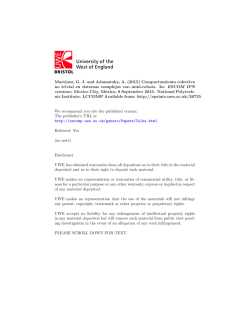

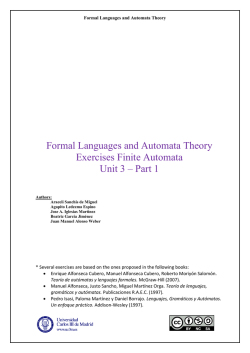
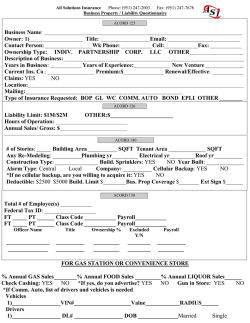
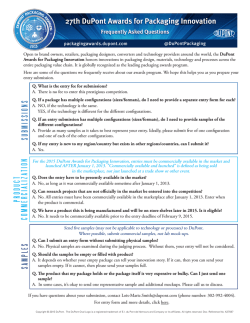
![arXiv:1501.07424v1 [math.LO] 29 Jan 2015](http://s2.esdocs.com/store/data/000457199_1-c519b33964b71d2972f4fe1f35ca3766-250x500.png)
